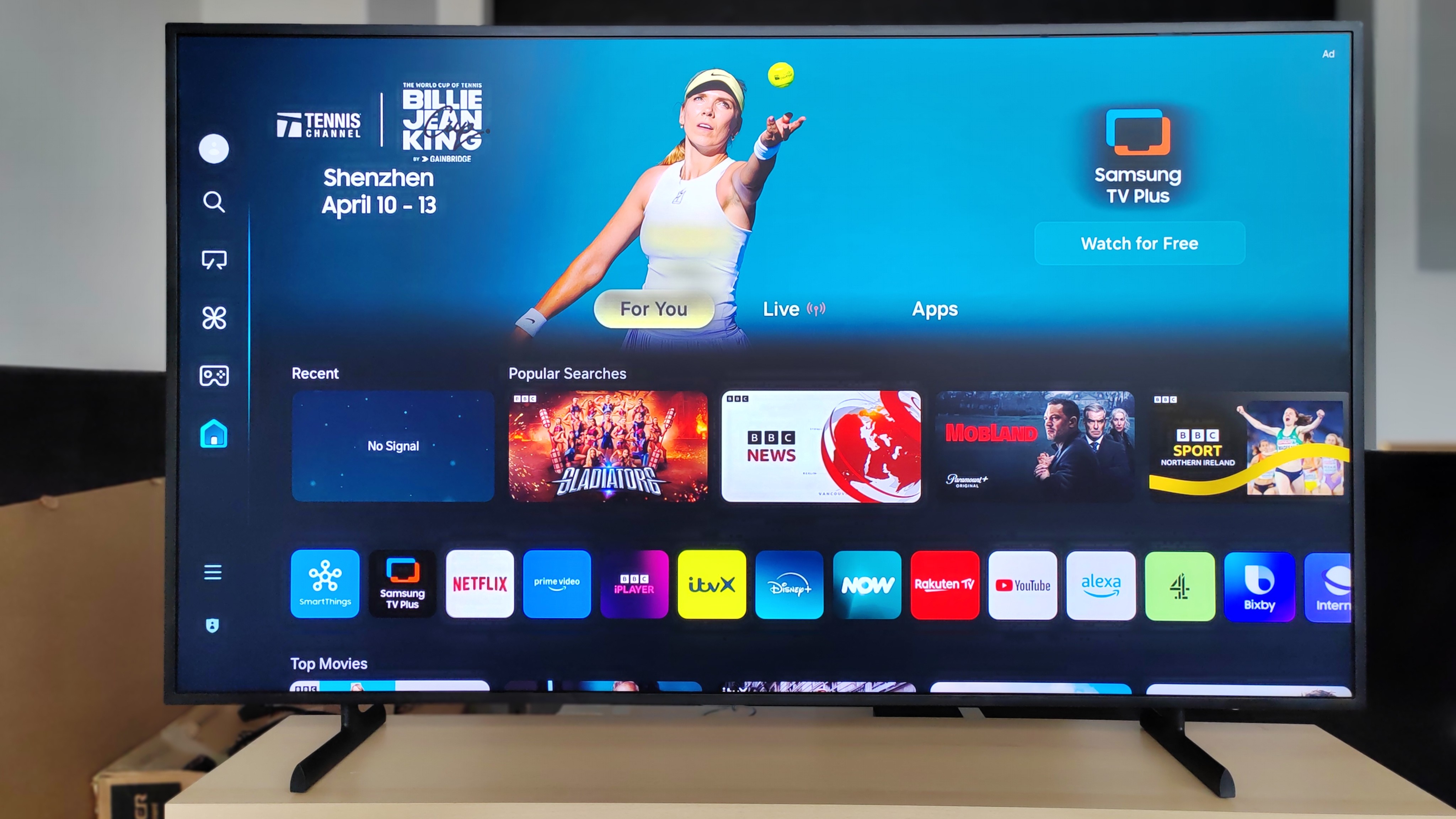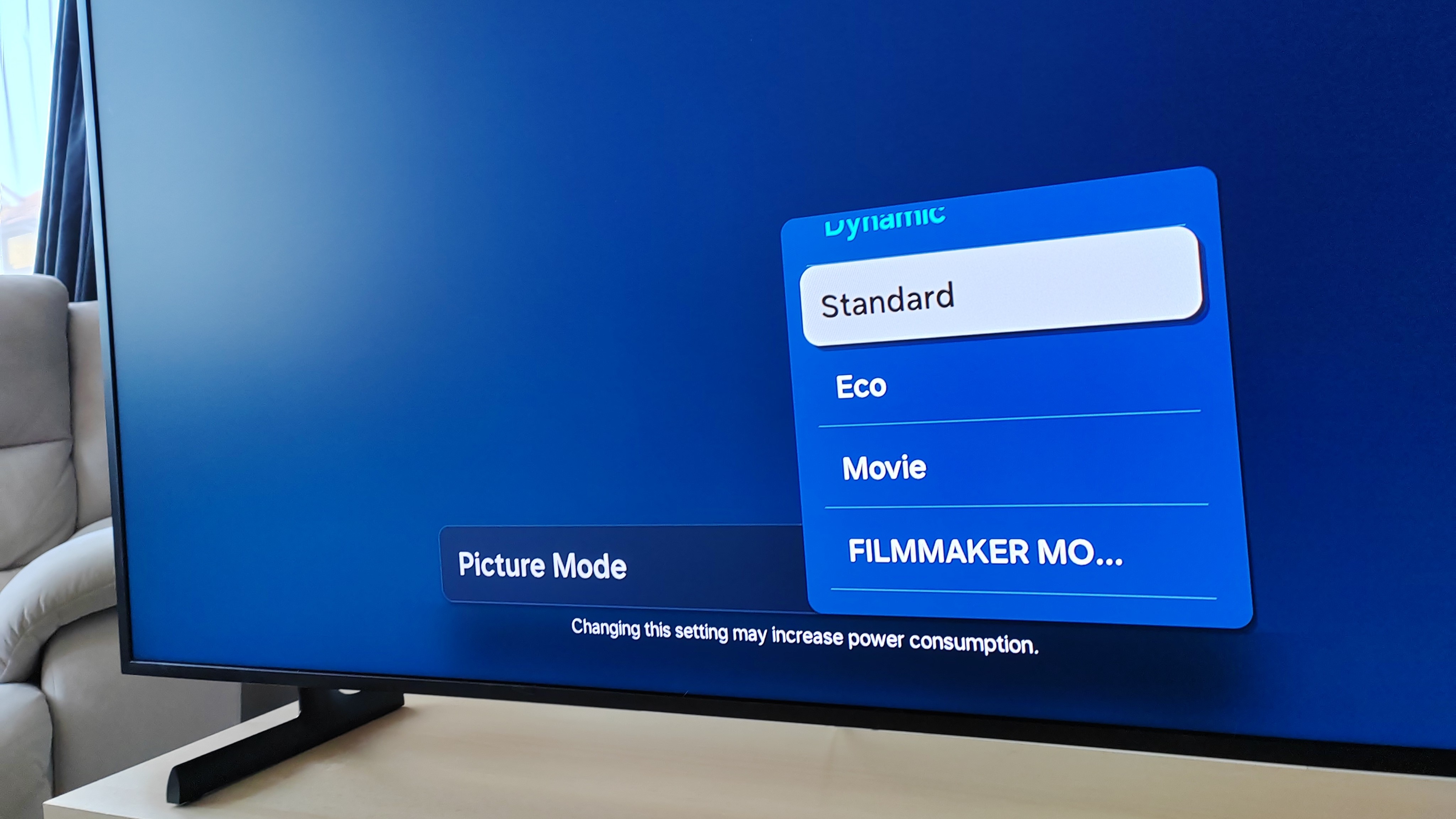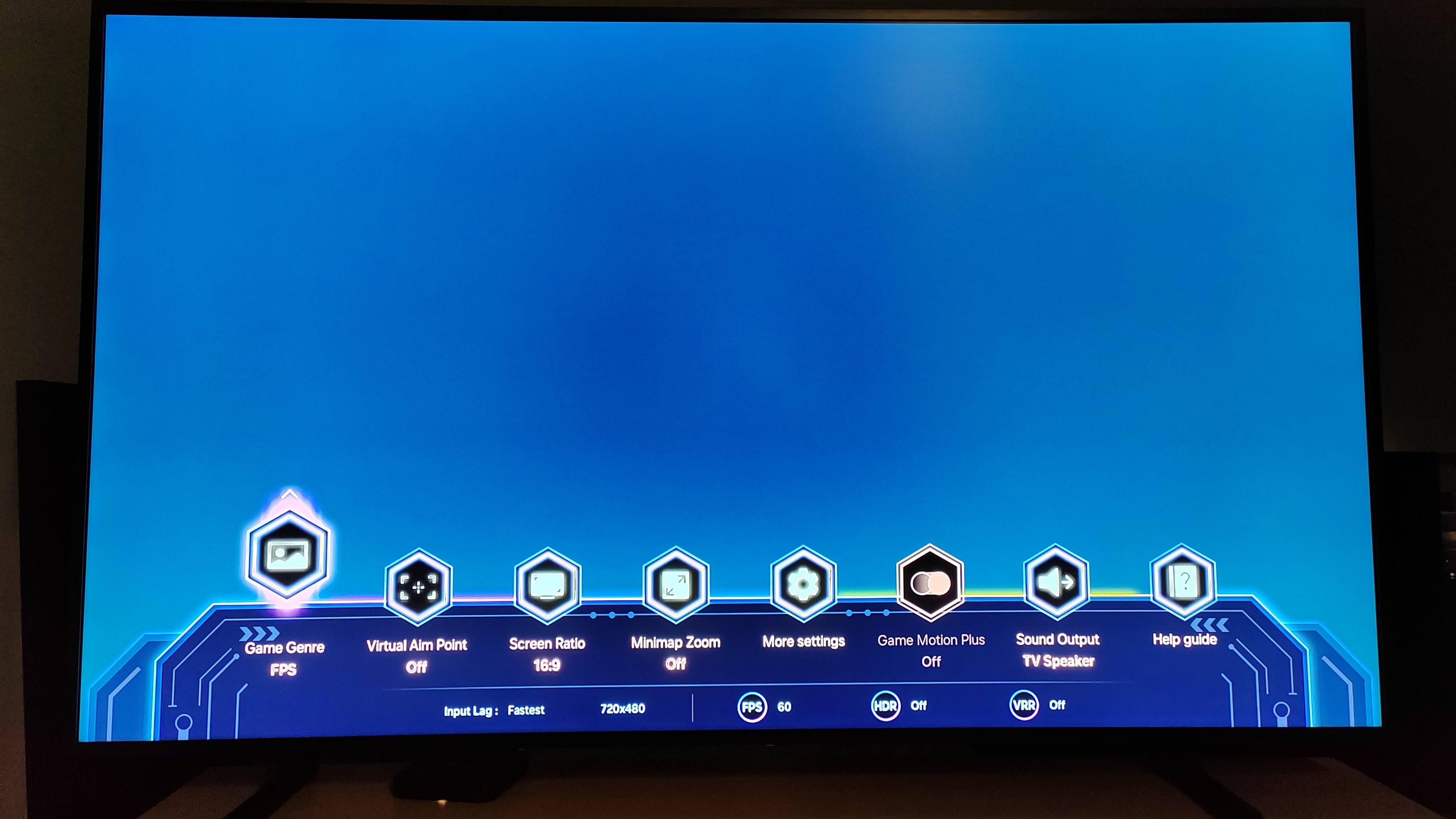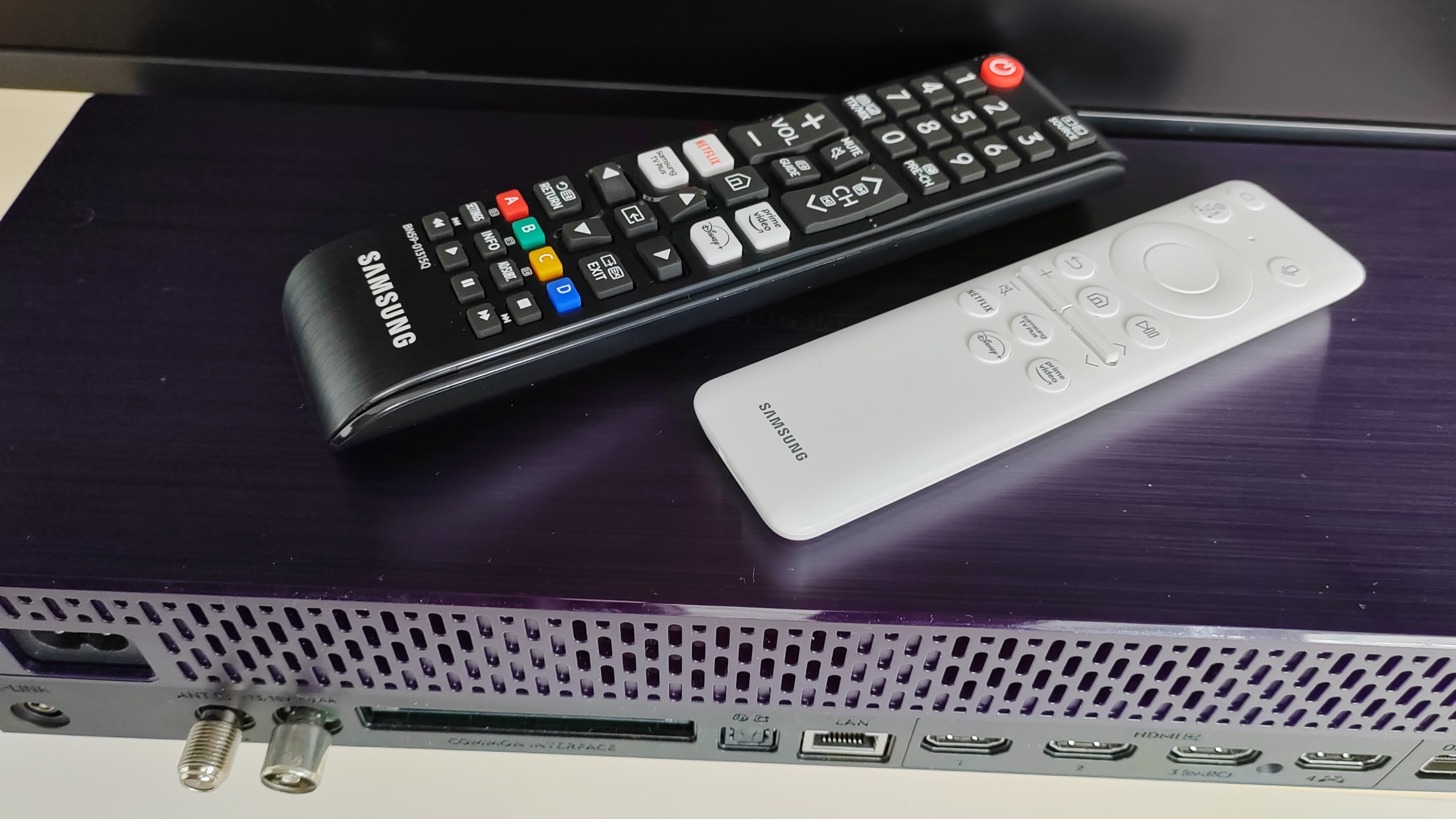Samsung The Frame review
Is last year's The Frame TV now better value than ever?


The Frame is a great TV choice for those who want more from their telly than just movies and shows. Samsung hasn’t made many changes with the 2024 version of its lifestyle hit, but a combination of artful design, smart functionality, and good-enough performance, means it more than warrants wall space. It may not be the king of contrast or the brightest high dynamic range (HDR) star, but it doesn’t really need to be. The Frame remains a recommended option for style-conscious viewers – and if. you can find the 2024 model for less than the 2025 release, then it's a veritable bargain.
-
+
Canvas-like matte screen
-
+
Tizen smart platform
-
+
Customisable picture bezels
-
-
No major innovations
-
-
No Dolby Vision
Why you can trust T3
In a world of cookie-cutter televisions, Samsung's The Frame has carved a niche all its own. This 4K smart telly is able to mimic artwork when hung on the wall, thanks to a canny combination of matte-effect screen, integrated digital art store, and optional clip-on picture frame bezels
The 2024 iteration, or the 'LS03D', actually continued on sale into 2025 – and while it's now officially been replaced, that only makes it better value.
Building on a familiar formula, blurring the line between TV tech and interior design, it's a great "design TV" for those who aren't always watching the best streaming services.
But with precious little innovation to speak of compared to previous models, has this particular Old Master become a little too complacent? Or, actually, is its improved value reason to make it the one to buy?
Price & Availability
The Frame is available in 43-, 50-, 55-, 65-, 75-, and 85-inch screen sizes, priced at £799, £849, £999, £1,199, £1,999, and £2,499 respectively. In the States, the same range sells for comparable dollar prices.
That was upon launch, though, and now that Samsung has released the 2025 version of The Frame and the higher-end The Frame Pro (which has a wireless connections box, separate to the panel – so no wires, bar power to the screen itself), it's available for less.
Features & What's New?
As you’d expect of any Samsung Smart TV, the LS03D runs the brand's chosen Tizen OS. It’s a robust, app-rich smart system that offers a wide range of streaming services, including Netflix, Prime Video, Disney+, BBC iPlayer, and Samsung TV Plus – the last of which being Samsung’s library of 'FAST' (Free Ad-Supported TV) channels.
Get all the latest news, reviews, deals and buying guides on gorgeous tech, home and active products from the T3 experts
Tizen continues to shine as one of the most complete smart ecosystems available. It supports Alexa voice assistant (and Bixby, if you want), and integrates deeply with the SmartThings platform, making it easy to control compatible connected devices throughout your home.

The user interface (UI) is clean, and helpfully supports screen mirroring from smartphones and Multi View for watching two sources at once.
Gamers will find plenty to appreciate here, too. There’s a dedicated Game Hub and a Game Menu overlay that gives easy oversight of variable refresh rate (VRR), high dynamic range (HDR), and input lag settings.
This 2024 model retains the One Connect Box, in its half-depth guise, for all your wired connections. It includes four HDMI ports (one with eARC), two USB 2.0 ports, digital optical audio out, Ethernet, plus aerial and satellite inputs. Wireless connectivity includes Wi-Fi and Bluetooth 5.2.
HDMI 4 is the gaming-designated port and supports 4K at 120Hz, along with ALLM (Auto Low Latency Mode) and AMD Freesync Premium. Input lag is excellent. I measured latency at just 9.7ms (1080p/60Hz). There are actually two Game Mode options – Original and Game Motion Plus – which let you choose between raw performance and a smidge of motion processing.
As for what’s new? In truth, not much. I’m told the matte screen is slightly different, although without a side-by-side comparison with its previous incarnation, you’ll be hard-pressed to spot any difference. Power consumption has also apparently been reduced a smidge.
Performance
At the heart of The Frame's visual capabilities is Samsung’s Quantum Processor 4K. It’s the same silicon used in previous generations. While there’s no headline performance bump over the 2023 model, image quality remains the right side of impressive.
Quantum Dot-enhanced colours look suitably vibrant. The panel is Pantone validated, ensuring accurate colour reproduction for digital artworks. Hues are rich, with strong reds and deep blues, plus subtle gradations – ideal, if your taste extends from Impressionist painters to Rick and Morty.
Motion handling remains a strong suit. Watching fast-paced sports, specifically Formula 1 on Auto mode confirms smooth, blur-free motion.

Brightness and contrast come across well, even when viewed in a bright room; this is where the matte screen treatment really comes into its own. HDR performance is solid but not ground-breaking, echoing its predecessor.
Placed directly in front of a bay window, the screen resists glare remarkably well, keeping content bold and contrasty, regardless of ambient light.
The Frame offers a familiar raft of picture presets, including Movie, Filmmaker Mode, Dynamic, Standard, and Eco. Alternatively, there’s the option of an Intelligent Mode, which adjusts both audio and visual output in real-time based on content and viewing environment. I found it consistently delivered images with decent dynamics, and agreeable colour pop, and for most people, it would be the best viewing option.
Inevitably blacks aren’t OLED-level deep, but Samsung’s Dual LED backlighting helps improve perceived contrast and tonal accuracy. Viewing angles are acceptable, though not immune to some colour and contrast loss off-axis.
Audio is more refined than you might expect. The Frame sports a 40W 2.0.2-channel system with Object Tracking Sound. In addition to its downward-firing stereo speaker array, there’s a couple of height speakers on the upper rear of the panel. While the system lacks bass – there’s zero low-end punch – the soundstage is wider and more energetic than basic stereo TV setups.
Amplify and Standard are the two on-board audio modes, and the TV also supports Samsung’s Q-Symphony system, allowing compatible Samsung soundbars to work in tandem with the TV’s speakers to create a larger audio field. If you’re not using a soundbar, choose the Amplify setting, which boosts dialogue and generally provides a fatter sound. The system is also Dolby Atmos compatible.
Design & Usability
Out of the box, The Frame ships with a plain black surround; optional magnetic bezels let you customise the look to match your decor. Our review sample was supplied without any fancy bezels, so I only got to enjoy it in its naked form.
The panel itself is flat-backed for flush wall-mounting, and a Slim Fit Wall Mount is included in the box.
A major part of The Frame’s clean aesthetic is enabled by the aforementioned One Connect box. Rather than plugging cables directly into the screen, all connections, from HDMI to aerial inputs, go into this external hub. This then connects to the TV via the clear One Near-Invisible Cable, allowing for a minimalist, art-gallery-like wall installation.

This single cable approach definitely makes installation easier and more flexible, as you can position your media devices away from the display without cluttering the space – but you will need to think where to house the One Connect box.
Not wall-mounting from the get-go? Two slot-in feet are included for tabletop use, height adjustable to accommodate a soundbar.
The TV comes with two remotes: a minimalist, solar-powered Bluetooth pointer, and a traditional button-laden remote – both of which sport dedicated streaming app shortcuts.
Significantly, The Frame isn’t designed to turn off like a regular TV. Once you’re done box-set bingeing, you don’t have to put up with a black glass void on the wall. Instead, The Frame transitions to ambient mode, presenting artwork and photography.
Verdict

This lifestyle TV continues to marry form and function with considerable skill. Pictures are vibrant, if not reference-grade, and the anti-glare matte screen remains genuinely impressive when viewing artworks.
Add smart gaming, a comprehensive connected platform, and high customisability, and you’ve got a TV that’s both stylish and capable.
But with rivals circling, The Frame is beginning to look a little staid. The newly announced Frame Pro, a high-spec Mini-LED flagship model, updates the line, but costs a lot more.
It's The Frame's now shrunken price for the 2024 model that makes it an Old Master worth seeking out. Particularly if the design and art angles are your significant reasons to purchase.
Also consider
There are a number of new rivals in this space, showing how popular it's become. Hisense offers its Canvas TV, while TCL offers its NXTVision/NXTFrame A300W.
If you've got even more cash, want fewer wires on show, and can house connections in a separate box away from the TV – which makes particular sense for a wall-hung "art TV" such as this – then Samsung's The Frame Pro is equipped for the job.
Follow T3.com on Google News to keep our latest news, insights, and features at the top of your feeds!
For over 25 years, Steve has been casting his keen eyes and ears over the best that the world of TV and audio has to offer. He was the creator of Home Cinema Choice magazine, and contributes to huge range of technology, home and music titles along with T3, including TechRadar, Louder, Ideal Home, the i newspaper, and more.
You must confirm your public display name before commenting
Please logout and then login again, you will then be prompted to enter your display name.


